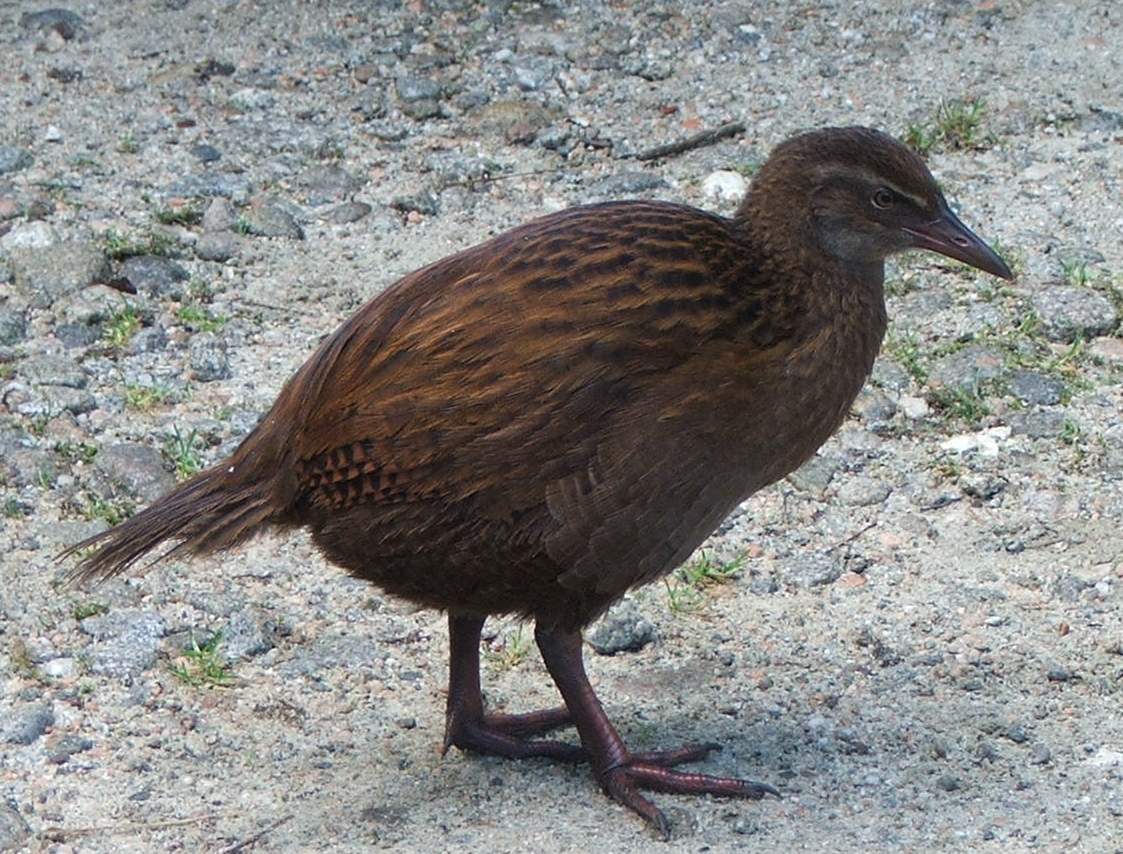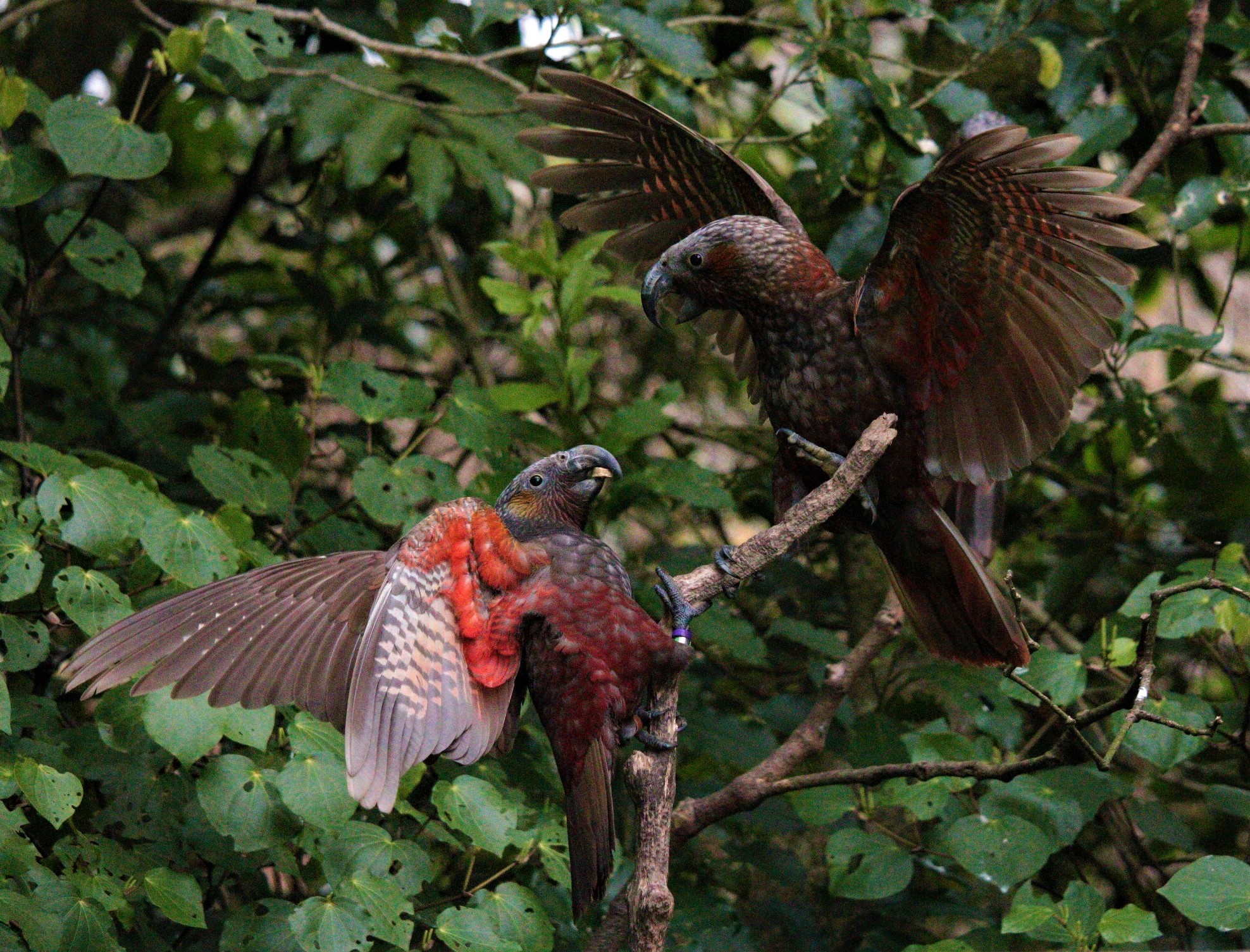Nelson Coast Temperate Forests
The ecoregion’s land area is provided in units of 1,000 hectares. The conservation target is the Global Safety Net (GSN1) area for the given ecoregion. The protection level indicates the percentage of the GSN goal that is currently protected on a scale of 0-10. N/A means data is not available at this time.
Bioregion: New Zealand (AU1)
Realm: Australasia
Subrealm: New Zealand
Ecoregion Size (1000 ha):
1,461
Ecoregion ID:
170
Conservation Target:
79%
Protection Level:
10
States:
The temperate rainforests of the Nelson coast are a globally rare habitat type. They are unusually intact, with coastal forests rising nearly unbroken to alpine herbfields in places. These plants and animals here have some affinities with those of alpine and forest habitats further south in Fiordland, though they are largely absent in the intervening Westland forests due to past glaciations scouring the landscape there. Karst and caves in this ecoregion support an array of endemic plants and cave invertebrates.
.jpg)
The Nelson cave spider (Spelungula cavernicola) is the flagship species of the Nelson Coast Temperate Forests ecoregion. Image credit: Courtesy of Hovmoller, iNaturalist
Drier forests towards the east are primarily beech (Nothofagus spp.) with black beech (Nothofagus solandri solandri) on drier ridges. Podocarp forests with rich understories of vines, shrubs, and ferns occur in the wetter west. Here, one finds northern rata (Metrosideros robusta), karaka (Corynocarpus laevigatus), and the nikau palm (Rhopalostylis sapida). The yellow pine (Halocarpus biforme) and species of Dracophyllum occur on wet infertile granite-based soils. Half of New Zealand’s 2,450 plant species are found in the region and despite the relatively small amount of alpine habitat, the percentage of alpine flora in the range of 80 percent. Almost 50 percent of the ecoregion’s endemic plants occur on marble or limestone (karst) substrates.

Western Weka. Image credit: HuttyMcphoo (CC by 2.5)
New Zealand kaka (Nestor meridionalis), kereru or New Zealand wood pigeon (Hemiphaga novaeseelandia), and New Zealand falcon (Falco novaeseelandiae) occur. Northern spotted kiwi (Apteryx haastii) and blue duck (Hymenolaimus malacorhynchos) retain populations in the uplands. The Farewell Spit on the northern coast is an important feeding area for about 90 migratory birds and local waders. Paparoa National Park is one of a few mainland breeding colonies for the endemic Westland black petrel (Procellaria westlandica). A rich invertebrate fauna includes the endemic carabid beetle (Cillenum tillyardi), 20 different types of cave weta (primitive cricket-like invertebrates), and the Nelson cave spider (Spelungula cavernicola), New Zealand’s largest spider with a 12 centimeters leg span. The wet beech forests and tussocks in the northwest are home to dozens of giant land snail species (Powelliphanta spp.). Ancient Rhytididae carnivorous snails feed on native worms.

New Zealand kaka. Image credit: Kate Macbeth (CC by 4.0)
Ninety-five percent of tall forests and tussock herbfield above 600 meters remain relatively intact, mainly in Kahurangi National Park, Paparoa National Park, and Abel Tasman National Park. Tourists trampling fragile higher-elevation habitats is a growing problem. Introduced animals, such as red and fallow deer (Cervus elaphus and Dama dama) and chamois (Rupicapra rupicapra), as well as invasive weeds like gorse (Ulex europaeus) degrade natural vegetation. Indigenous flora, which is not adapted to regular fires, are regularly threatened by human-caused wildfires. As elsewhere in New Zealand, invasive rats, possums, and stoats prey on native birds and invertebrates.
Key conservation actions for the next decade are to
- Carry out effective rat, possum, and stoat control in the vicinity of populations of threatened bird and invertebrate species.
- Enhance wildfire management and control in drier eastern key biodiversity areas.
- Effectively manage visitor traffic to fragile caves and alpine habitats.
-
-
- Boffa Miskell Limited. 2015. Nelson Coastal Study: Natural Character of the Nelson Coastal Environment. Retrieved from http://www.nelson.govt.nz/assets/Environment/Downloads/Nelson-Plan/Nelson-Coastal-Study-Natural-Character-Coastal-Environment-Boffa-Miskell-updated-June-2015-opt.pdf
- Frimmel, S. 2020. Nelson Coast temperate forest ecoregion. WWF-US, Washington DC.
- Given, R. 1995. North-west Nelson. Pages 510 – 512 in S. D. Davis, V. H. Heywood and A. C. Hamilton. editors. Centres of Plant Diversity. Volume 2. Asia, Australasia, and the Pacific. WWF/IUCN, IUCN Publications Unit, Cambridge, UK.
-
Cite this page: Nelson Coast Temperate Forests. Ecoregion Snapshots: Descriptive Abstracts of the Terrestrial Ecoregions of the World, 2021. Developed by One Earth and RESOLVE. https://www.oneearth.org/ecoregions/nelson-coast-temperate-forests/
-



